Octopuses are fascinating creatures of the sea, known for their intelligence, adaptability, and unique appearances.
But among these intriguing beings, some stand out due to their rarity and the mystery that surrounds them.
We will explore some of the rarest octopus species found in the world. These species not only captivate scientists and marine enthusiasts alike but also play a crucial role in the biodiversity of our oceans. Join us as we dive into the lives of these extraordinary cephalopods.
1. Dumbo Octopus

The Dumbo octopus is a fascinating creature that dwells deep in the ocean, often found at depths of around 13,000 feet.
Named after the Disney character, Dumbo, due to its ear-like fins that resemble the elephant’s ears, this octopus is as charming as it is elusive. These fins help the Dumbo octopus to glide gracefully through the water, giving it an almost magical appearance.
Unlike other octopus species, Dumbo octopuses are not known for their ink-squirting ability. Instead, they rely on their ability to blend into their surroundings as a primary defense mechanism.
Their soft, gelatinous bodies allow them to withstand the intense pressures of the deep sea, a habitat where few other creatures dare to venture.
The Dumbo octopus feeds on small invertebrates found on the ocean floor, using its webbed arms to pounce on unsuspecting prey.
Due to their remote habitat, little is known about their behavior and lifecycle, making them a subject of great interest to marine biologists. Observing a Dumbo octopus in its natural environment is a rare and notable event, contributing valuable insights into the mysteries of deep-sea life.
2. Blanket Octopus

The Blanket octopus is a spectacular and rare sight in the ocean, known for its striking appearance and unique defense mechanisms.
This octopus gets its name from the large, web-like membrane that extends between its arms, resembling a blanket flowing through the water. The Blanket octopus can unfurl this membrane to appear larger and more intimidating to potential predators.
Found mostly in the warm waters of the tropical and subtropical oceans, the Blanket octopus showcases a fascinating example of sexual dimorphism.
Females are vastly larger than males, with females reaching up to 2 meters in length, while males are a mere few centimeters. This size difference is one of the most pronounced of any animal species.
In addition to their size and appearance, Blanket octopuses have an unusual and clever defense tactic. They are known to rip off tentacles from the Portuguese man o’ war jellyfish and wield them as weapons.
The nematocysts from the jellyfish tentacles can still sting, providing the octopus with an effective deterrent against predators. Observing a Blanket octopus in its natural environment is a rare treat, offering a glimpse into the extraordinary adaptability and resourcefulness of marine life.
3. Blue-Ringed Octopus

Despite its small size, typically only 12 to 20 centimeters long, this octopus can deliver a venomous bite potent enough to harm humans. The vibrant blue rings that appear on its body serve as a warning to potential threats.
Found in the shallow waters of the Pacific and Indian Oceans, particularly along the coasts of Australia, Indonesia, and the Philippines, the Blue-ringed octopus prefers habitats such as coral reefs and tidal pools.
Its venom contains tetrodotoxin, a powerful neurotoxin that can cause paralysis and respiratory failure.
Despite its dangerous reputation, the Blue-ringed octopus is a relatively shy creature, preferring to avoid confrontation.
It displays its blue rings only when threatened, relying on camouflage to blend into its surroundings most of the time. Due to its elusive nature and the remote locations it inhabits, encounters with this octopus are rare, making it a subject of intrigue and caution among divers and marine biologists.
Observing one in the wild is an awe-inspiring yet humbling experience, highlighting the delicate balance of beauty and danger in the ocean.
4. Mimic Octopus
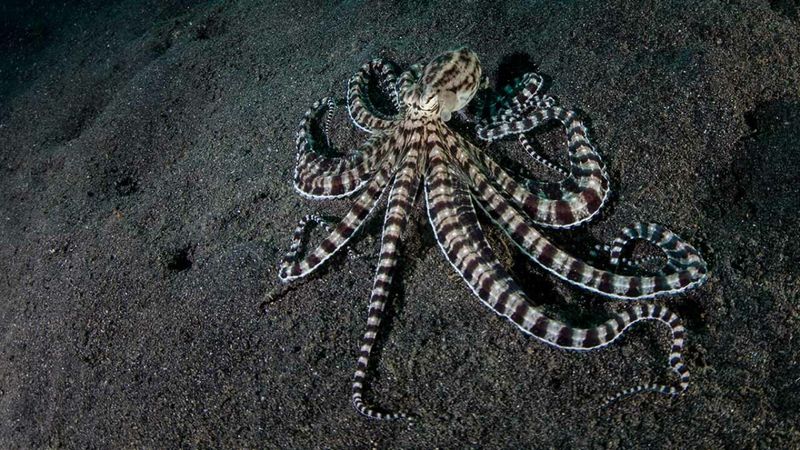
This is a master of disguise, known for its incredible ability to impersonate other marine animals. Discovered relatively recently in 1998, this species has captured the attention of scientists and marine enthusiasts worldwide.
Found in the shallow, murky waters of Indonesia and Malaysia, the Mimic octopus can imitate the appearance and movements of more than 15 different marine species, including lionfish, flatfish, and sea snakes.
This remarkable ability is thought to be a survival tactic, allowing the Mimic octopus to deter predators by posing as more dangerous or unpalatable creatures.
The Mimic octopus’s adaptive coloration and shape-shifting capabilities are not just for protection; they also play a role in hunting.
By mimicking the behavior of certain prey species, the Mimic octopus can get closer to unsuspecting targets. Its intelligence and adaptability make it one of the most intriguing species of octopus, providing valuable insights into the evolutionary potential of cephalopods.
Observing a Mimic octopus in action is a captivating experience, showcasing the boundless creativity of nature’s designs.
5. Vampire Squid
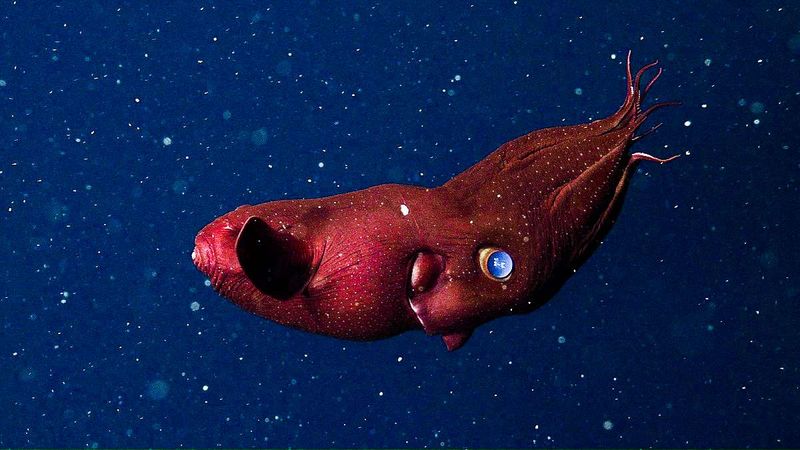
Despite its name, the Vampire squid is not an octopus, but it shares many characteristics with its eight-armed relatives.
This extraordinary creature inhabits the oxygen-minimum zones of the deep ocean, where few others can survive. Its name comes from its dark color and cloak-like webbing that connects its arms, resembling a vampire’s cape.
Unlike other cephalopods, the Vampire squid does not rely on ink to defend itself. Instead, it uses bioluminescent photophores scattered across its body to create mesmerizing displays of light, confusing potential predators.
This light show is not only a defense mechanism but also a means of communication in the pitch-black depths of its habitat.
The Vampire squid’s diet consists mainly of marine snow, a mix of organic debris that falls from the upper layers of the ocean. Its ability to survive in low-oxygen environments and its unique adaptations make the Vampire squid a subject of great scientific interest.
6. Argonaut Octopus
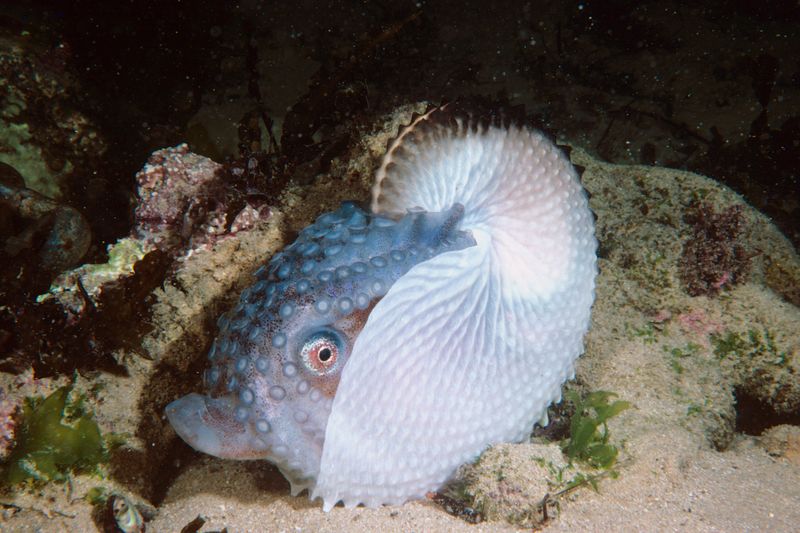
Often referred to as the Paper Nautilus, this is a unique and rare octopus species known for its beautiful, paper-thin shell. Unlike most octopuses, which do not have any form of external shell, the female Argonaut creates a thin, coiled shell to protect her eggs and maintain buoyancy in the open ocean.
This shell is a true marvel of nature, fragile yet perfectly suited to its purpose.
Found in the warmer regions of the world’s oceans, Argonauts are pelagic animals, meaning they spend most of their lives floating near the surface of the water.
The male Argonaut is significantly smaller than the female and does not produce a shell. This sexual dimorphism is one of the defining characteristics of the species.
The Argonaut’s lifestyle and reproductive strategies are a subject of fascination for marine biologists. The delicate nature of the Argonaut’s shell and its open-ocean habitat make it a challenging species to study, further adding to its allure and rarity in the world of marine life.
7. Giant Pacific Octopus
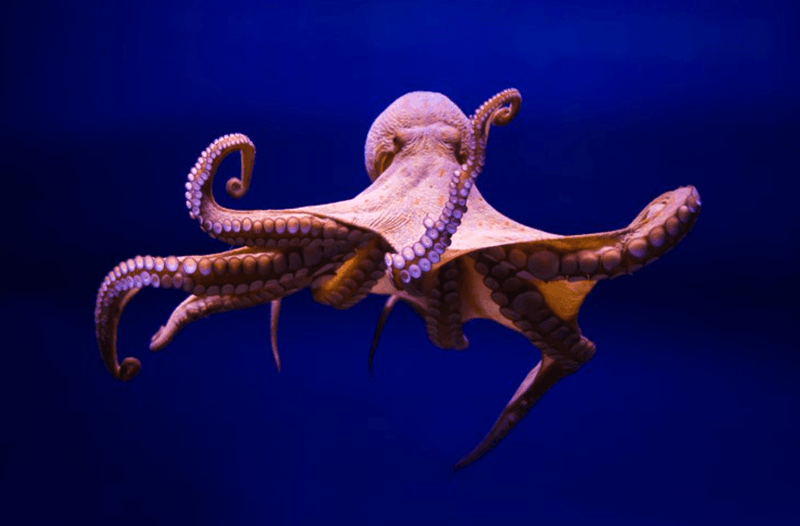
Known for its impressive size and intelligence, this octopus can weigh over 150 pounds and have an arm span of up to 20 feet. Its reddish-brown color helps it blend into the rocky ocean floor, making it a master of camouflage.
This species is not only remarkable for its size but also for its complex behavior and problem-solving abilities.
The Giant Pacific octopus is known to use tools, open jars, and even play games, showcasing its impressive cognitive skills. These octopuses are solitary creatures, often preferring to hide in dens created in caves or crevices.
The Giant Pacific octopus plays a critical role in its ecosystem, serving as both predator and prey. Its diet consists of crabs, clams, and fish, while it is preyed upon by sharks and larger marine mammals.
Studying the Giant Pacific octopus provides valuable insights into the intelligence and adaptability of cephalopods. Encountering this magnificent creature in the wild is a memorable experience, highlighting the wonders of ocean life.
8. Algae Octopus
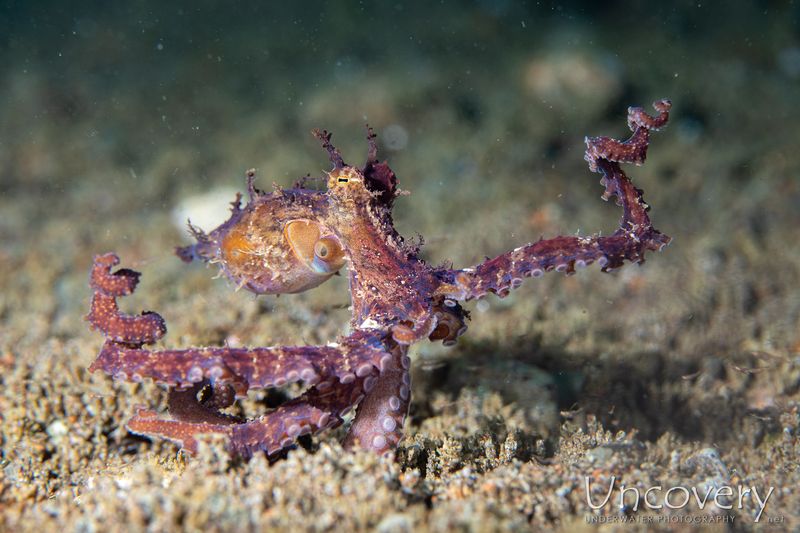
The Algae octopus is an expert in camouflage, known for its ability to blend seamlessly into its surroundings.
Found in the shallow waters of the Indo-Pacific region, this octopus can change the color and texture of its skin to mimic algae-covered rocks, making it nearly invisible to predators and prey alike. This remarkable adaptation allows it to thrive in diverse marine environments.
The Algae octopus is a small species, typically measuring about 10 centimeters in length. Despite its size, it is a skilled hunter, using its camouflage to ambush unsuspecting prey such as small fish and crustaceans.
Its intelligence and adaptability are evident in its hunting tactics and ability to navigate complex environments.
Studying the Algae octopus offers insights into the evolutionary advantages of camouflage and the complex behaviors of cephalopods.
9. Coconut Octopus
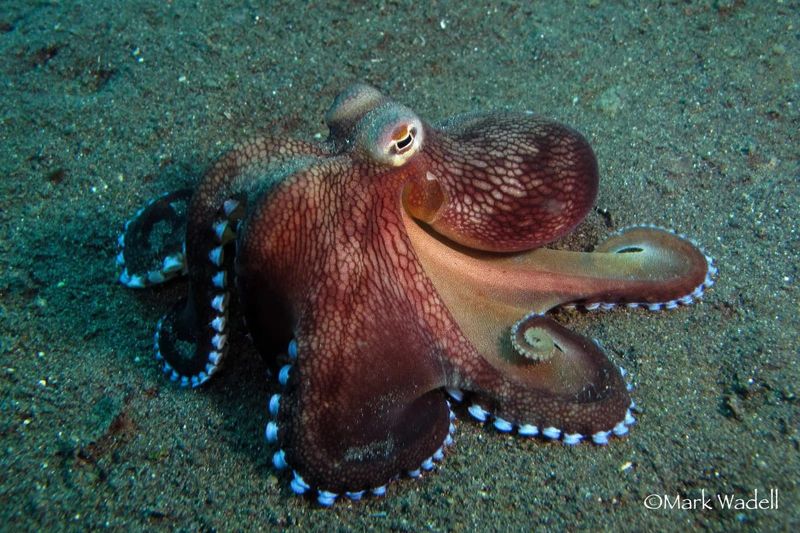
Found in the sandy bottoms of the Indo-Pacific region, this octopus is often seen carrying coconut shells or clam shells, which it uses as portable shelters. This behavior is not only fascinating but also highlights the cognitive abilities of octopuses.
The Coconut octopus is relatively small, with a body length of about 8 centimeters, but it makes up for its size with its ingenuity.
It is one of the few animal species known to use tools, showcasing a level of intelligence that intrigues scientists and marine enthusiasts alike. This octopus’s ability to carry and assemble shells as shelters is a clear indication of its problem-solving skills and adaptability.
Its interactions with the environment and resourceful use of available materials make the Coconut octopus a fascinating subject of study, offering a glimpse into the complex world of cephalopods and their remarkable adaptations.

